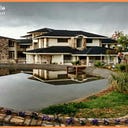Five Strategies for 21st Century Early Childhood Teachers
It’s no secret that the face of education has modified dramatically over the past 10 years or so. According to school in Dehradun academics across the country are operating hard to equip youngsters with the abilities required for success within the twenty-first-century world. Additionally, to instill in students the flexibility to adapt to dynamic technologies promptly, academics should foster learning environments that encourage essential thinking, creativity, problem-solving, communication, collaboration, world awareness, and social responsibility. Indian boarding schools implement the best strategies. Listed below are five ways early childhood academics are presently using in lecture rooms to arrange youngsters for the limitless future ahead.
1) Integrated Technology
Today’s children were born in the age of the web. Several are additional technologically savvy than the adults appointed the task of teaching them. To attach with these youngsters, academics should learn to talk their language and become familiar with the technology that comes thus naturally to the young. Integrating technology suggests that sound into students’ interests and strengthening their technical skills, all whereas providing enriching learning opportunities. Like any new development, several academics, eager to keep up with the latest fashion, merely undergo the motions of integrating technology. Top boarding schools implement these types of practices there are some best boarding schools in India that justifies fees. However, if they’re to succeed with it, they have over the motions — they need a deep understanding of the tools out there, still as significant reflection regarding a way to use them to boost learning. Additionally, the increased connectivity that accompanies this technology makes it very important that academics stress the importance of web safety.
2) Cooperative Learning Structures
Teacher-centered instruction has had its day. Effective academics are progressively using a student-centered approach. Cooperative learning sparks engagement in lecture rooms by encouraging interaction among the scholars themselves. The teacher, instead of calling on one student at a time, permits youngsters to discuss class materials with buddies or in teams, so maximizing the level of participation. The scholars work even as hard because of academics. Not a one-man show, the teacher’s role becomes that of a supporter instead. This, in turn, results in higher action, whereas promoting each team and class building.
3) Differentiated Instruction
Teachers will tailor learning experiences to differentiate among the individual needs of scholars within the room. There are three main learning styles: visual, auditory, and kinaesthetic. Cognitive Learning varieties of youngsters describe the characteristics of those learners still because the types of activities within which they best thrive, with the caveat that it’s solely learning designs being described, to be distinguished from cognitive styles (holistic, analytic, field-dependent, etc.). Academics also can differentiate by matching assignments to readiness levels, giving appropriate intervention or extension activities as required. Permitting youngsters to select activities supported areas of interest is another good way to differentiate. Offering selections is a superb motivator for teenagers.
4) Goal Setting
Involving youngsters within the goal-setting method is a superb way to encourage them to require ownership of their learning. Within the early stages, goal setting must be done in a very clear and simplistic approach — to Illustrate, frequent two-way conversations with youngsters regarding their progress in specific areas. Academics will any facilitate goal setting through the use of organizers, anchor charts, and similar aids.
5) Cross-Curriculum Teaching
In distinction to the standard teaching of subjects in isolation, teaching multiple subjects at the same time will facilitate students to go much deeper in learning ideas and skills. Naturally, this approach asks more from the teacher. It is often simple to blend math, science, or social studies content with reading or writing. However, it’s more challenging to combine all the subjects directly. Here are many major approaches to simultaneous learning. Project-based learning involves youngsters carrying out a project that finishes up with concrete results of some kind. Problem-based learning asks the teacher to guide youngsters in developing solutions to real-world issues. In inquiry-based learning, youngsters generate their own queries in step with their curiosities or interests, that they then investigate.
